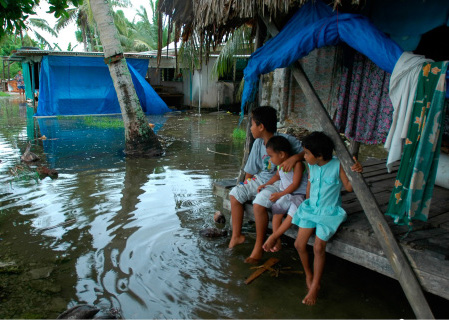
With the end of the COP16 climate change conference in Cancun, Mexico, at the weekend, a Reliefweb correspondent in Suva reports on the issue from a disaster relief perspective.
The September 2009 tsunami that affected Samoa, Tonga and American Samoa killed almost 200 people and destroyed scores of coastal villages. Floods in Fiji in 2009 resulted in reported damages of $54 million with an additional $5 million in humanitarian costs.
Community-based projects to enhance resilience of hazard-prone Pacific island countries have grown in number over the past 20 years. Some university studies have shown that benefits were particularly apparent in cases where development bodies worked with communities to identify risks using local knowledge.
One community-based adaptation project in Samoa involves the United Nations Development Program, which had gone to great lengths to adapt to traditional systems of governance based on a system of chiefs.
“This means really understanding the Chiefly system. And with workshops everything's run in Samoan, so the community feel that they own that project,” said Anna Gero, a researcher from the University of South Wales, in an interview with ReliefWeb.
Experts involved in those projects have stressed the importance of opening channels of communication between the disaster risk reduction community and the climate change adaptation community. And, they say that despite separate regional policy frameworks on disaster risk reduction and climate change adaptation, there has been some progress towards bringing the two agendas closer.
For many Pacific Island countries, the main vehicle for cooperation on disaster risk reduction and management is the Pacific Islands Applied Geoscience Commission, known as SOPAC. Established by the UN in 1972, SOPAC became an autonomous intergovernmental organization in 1984, initially among 12 island countries along with Australia and New Zealand.
Since then, seven other island countries have joined and SOPAC has broadened its focus from marine mapping and geosciences to include hazard assessment and risk management.
Reform work
Recently, SOPAC reached agreement on developing a joint disaster risk reduction and climate change adaptation framework with the body charged with overseeing work on climate change adaptation -- the South Pacific Regional Environment Programme.
“Work on the reform of the current institutional framework is being carried out in response to the decision of Pacific Islands Forum Leaders, which met in 2007,” explained Angelika Planitz, who is the Pacific subregion coordinator for the UN secretariat for the International Strategy for Disaster Reduction, UNISDR.
At the moment, Pacific Island countries are reviewing progress in implementing the Hyogo Framework for Action for Disaster Risk Reduction, which is a set of internationally-agreed guidelines for reducing disaster risk. Two regional consultations were conducted in April and August 2010, using a forum convened jointly by UNISDR and SOPAC.
Nine countries -- Australia, Cooks Islands, Fiji, New Zealand, Papua New Guinea, Marshall Islands, Samoa, Solomon Islands, Vanuatu -- are expected to provide news of their progress to the Global Platform for Disaster Risk Reduction, planned for May 2010 in Geneva, where UNISDR is headquartered. - United Nations International Strategy for Disaster Reduction Secretariat (UNISDR)



